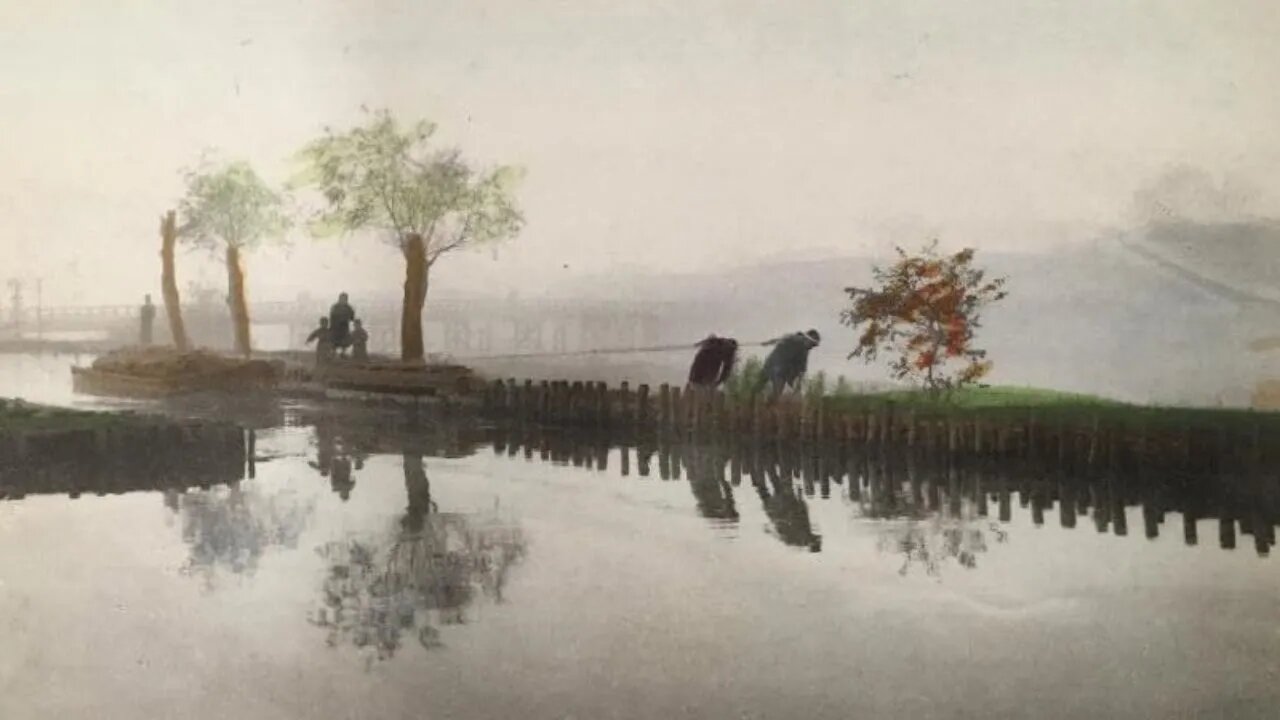Premium Only Content

The Japan that no one knows Japan, the land of water Water of Life
#Japan
#Tokyo
#Japanese
Healing Japan Travel
日本語バージョンはこちら Click here for the Japanese version
https://youtu.be/zg0dhZut5os
With Pictures of Japanese People 100 Years Ago Tokyo Shrines
Water of Life Taki Shrine Fuchu City
Going down the stairs, I thought it was a strange terrain.
The source of the deity was a small spring.
The fresh water, which has never dried up at any time of the year.
It has been there for hundreds, thousands, or tens of thousands of years.
It is a sanctuary that is typical of Japanese people, who are grateful to nature and enshrine it as a god.
It is a sanctuary that is uniquely Japanese.
Neighborhood of Taki Shrine
5 minutes on foot to Togoji Temple
10 minutes on foot Musashi Kokufu Hachimangu Shrine
15 minutes on foot Fumonji Temple
15 minutes on foot Bato Kannon Bosatsu
16 minutes on foot Hiyoshi Shrine
17 minutes on foot Myokoin Temple
18 minutes on foot to Anyoji Temple
19 minutes on foot Kompira Shrine
21 minutes on foot Ookunitama Shrine
23 minutes on foot Zenmyouji Temple
29 minutes on foot Koanji Temple
When I visit shrines in Tokyo, I am often amazed at the sanctuaries that have been protected by the people.
Flood, fire, earthquake, war, and worship.
Small shrines, shrines perched on the rooftops of buildings, and shrines directly under expressways.
Sanctuaries that are close to people in any form, and the guardians who protect them.
I made this video to share these beautiful images with you!
The Japanese landscape and the Japanese people of the past remain in old photographs.
Some of the photos are around 100 years old, some are about 150 years old, and some are 85 years old.
Please feel the connection with the people of the past!
Source: Gehino Taki (Waterfall)
Gehino Taki (Waterfall) at Nikko.1870s - 1890s.Kusakabe Kimbei.The Getty Museum
The Getty Museum https://www.getty.edu/art/collection/object/108NNS
Aizu Higashiyama Harataki Waterfalls, Aizu Wakamatsu City Aizu Library
https://adeac.jp/city-aizuwakamatsu/viewer/mp700330-100070/s0001-e-0007
From the memory of Fukakusa weaving into the future. Hikifune. Isikawa, Sakyo-ku. 101-031. 30s of Meiji era
BGM
Hometown
A Japanese children's song and shoka with music by Teiichi Okano and lyrics by Tatsuyuki Takano.
It is a shoka published by the Ministry of Education in 1914 for the sixth grade of "Shoka for Elementary Schools in Japan".
Rabbit Oshikishi Kano-no Yama (The Rabbit Chases the Mountain)
Fishing for crucian carp, the river of Kano
Yume ha mondemo megurite
"I'll never forget my hometown."
How are your parents?
Tsutsugami-no-shinai ya tomogaki (Tsutsugami-no-shinashi, Tomogaki)
"Even in the rain and wind..."
I remember my hometown.
"I will follow my heart."
Someday I will return home.
Mountains are blue, my hometown.
The water is clear.
Yuyake Koyake Koyake" (Sunset Sunset Sunset)
A Japanese children's song and shoka with lyrics by Ameko Nakamura and music by Makoto Kusakawa.
Lyrics written in 1919, music composed in 1923 (one month before the Great Kanto Earthquake).
My name is Mayu Noda.
I will introduce the charm of shrines around Tokyo, which I love.
Sometimes temples too.
Please subscribe to our channel.
Inside Japan's Coolest Shrine
https://www.youtube.com/watch?v=siS4puFCoDk
Travel to Nagano #1☆ Visit all 5 Togakushi shrines!! Japan vlog
https://www.youtube.com/watch?v=e9SPkyBNk2g
TOKYO AT NIGHT 🇯🇵 | Meiji Jingu Shrine | Tokyo Travel Vlog
https://www.youtube.com/watch?v=HTiI_AI_RzQ
Walk in Kyoto, Japan | Kyomizu Temple
https://www.youtube.com/watch?v=g0aWmu_PhlA
Japan in 8K ULTRA HD - Land of The Rising Sun (60 FPS)
https://www.youtube.com/watch?v=G5RpJwCJDqc
-
 LIVE
LIVE
Nikko Ortiz
38 minutes agoLive - Reaction Time, News, Politics, and More!
157 watching -
 LIVE
LIVE
LFA TV
4 hours agoLFA TV ALL DAY STREAM - WEDNESDAY 9/3/25
4,926 watching -
 LIVE
LIVE
MYLUNCHBREAK CHANNEL PAGE
2 hours agoHistory’s Most SHOCKING Claims?
273 watching -
 LIVE
LIVE
Caleb Hammer
2 hours agoThe First LGBT Divorce On Financial Audit
95 watching -
 LIVE
LIVE
Badlands Media
1 hour agoBadlands Daily: September 3, 2025 (#2)
3,202 watching -
 LIVE
LIVE
Jim Jordan
1 hour agoEurope’s Threat to American Speech and Innovation
507 watching -
 LIVE
LIVE
The State of Freedom
5 hours agoFLF: #16 Delivering the Truth Comes at a Cost w/ Joe Hoft
24 watching -
 31:01
31:01
Rethinking the Dollar
58 minutes agoWednesday Morning Check-In: Let's Talk...
-
 LIVE
LIVE
House Committee on Energy and Commerce
2 hours agoExamining Opportunities to Advance American Health Care through the Use of AI Technologies
17 watching -
 1:04:12
1:04:12
Crypto Power Hour
3 hours agoSmart Contracts & Fintech 101
1445